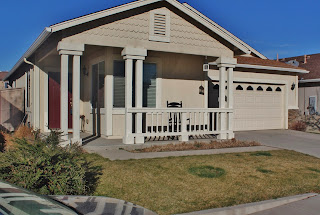 I have tomato plants full of tomatoes but they are not ripening like I think they should. After looking at my garden calendar I realized they have not had fertilizer in 3 weeks, its time to feed.
I have tomato plants full of tomatoes but they are not ripening like I think they should. After looking at my garden calendar I realized they have not had fertilizer in 3 weeks, its time to feed.When I choose fertilizer I always buy organic, the next choice is price. If the liquid is on sale that's the one otherwise I like the granular or dry variety. It can be less messy and easily resealed with a clip or painters tape.

Dry fertilizers work as well as liquids, but it takes longer to become available to the plant. This is easy to fix. Soaking the fertilizer in a bucket for water for several hours will make it a solution, this makes it more readily available to the plant. If you plants are in containers make the soil is moist otherwise it will run out the bottom. Water, let sit and then water with the enriched water.

Storing the unused dry fertilizer is so easy, a clothes pin or masking tape works perfectly. I have also learned that if you keep them for to many freezing temperatures they will work well next spring.
Good luck and let me know things are in your garden. Join me on facebook at GardenCoach Northern Nevada, I would love to see pictures.
Marnie

























